Errant Thoughts
About Andrew Cusack
 Writer, web designer, etc.; born in New York; educated in Argentina, Scotland, and South Africa; now based in London.
Writer, web designer, etc.; born in New York; educated in Argentina, Scotland, and South Africa; now based in London. read more
News
Blogs
Reviews & Periodicals
Arts & Design
World
France
Mitteleuropa
Knickerbockers
Argentina
The Levant
Africa
Cape of Good Hope
Netherlands
Scandinavia
Québec
India
Muscovy
Germany
Academica
Calligraphic Correspondence
What a pleasure it must be to receive a letter from the designer Frank Ortmann (c.f. here), if the calligraphic correspondence received by printer Martin Z. Schröder is anything to go by. (See here & here.)
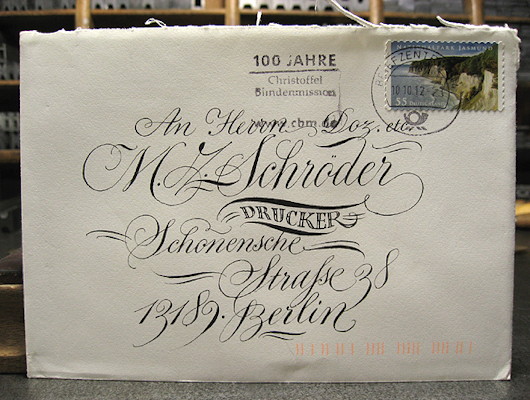
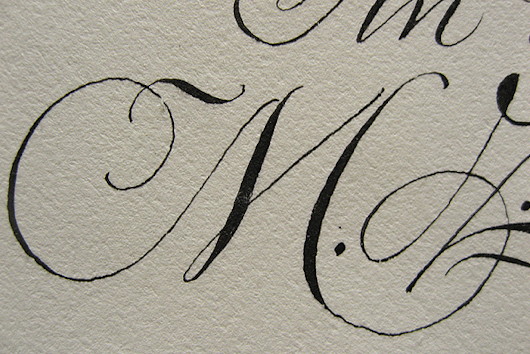
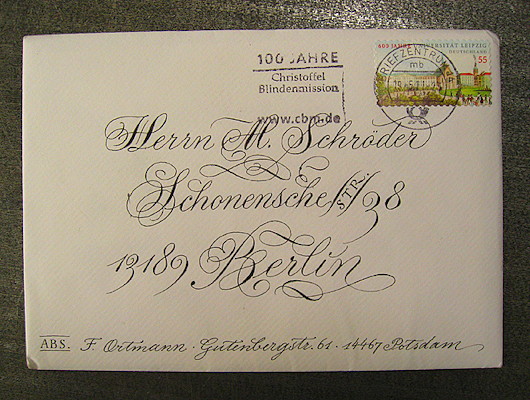
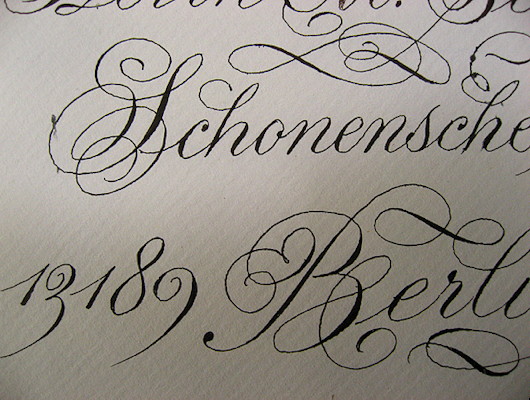
The Dutch in Rhodesia
…and why they stayed there.
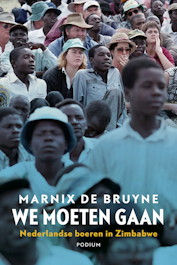 Journalist Marnix de Bruyne has shed new light on the post-war wave of Dutch immigration to Rhodesia with his new book, We moeten gaan. Nederlandse boeren in Zimbabwe (‘We Must Go: Dutch Farmers in Zimbabwe’).
Journalist Marnix de Bruyne has shed new light on the post-war wave of Dutch immigration to Rhodesia with his new book, We moeten gaan. Nederlandse boeren in Zimbabwe (‘We Must Go: Dutch Farmers in Zimbabwe’).
Why did so many people emigrate from the Netherlands in the fifties? Why did hundreds of them choose to settle in what was then called Rhodesia, today’s Zimbabwe? And why did so many of them stay after 1965, when the country was led by a white-minority regime, faced an international boycott and was engulfed in a bloody guerrilla war?
De Bruyne attempted to answer these questions through a recent seminar at Leiden University’s African Studies Centre. The university has rather handily made a recording of the seminar available online.
Daar’s ook ’n interview (in Nederlands) met Mnr de Bruyne in Mare, die koerant van die Universiteit Leiden.
(Dave: hierdie post is vir jy!)
A Handsome Hamsun
Book design is a craft sadly neglected in the English-speaking world. In paperbacks, the French reign supreme, while the Teutons and Scandos design the most elegant hardcover books.
This German edition of Ingar Sletten Kolloen’s biography of Knut Hamsun was designed by Frank Ortmann for Landt Verlag, founded by the conservative popular historian Andreas Krause Landt (aka Andreas Lombard). Landt Verlag is now an imprint of Thomas Hoof’s Manuscriptum publishing firm. Hoof is better known for starting Manufactum, the retail company known for offering high-quality goods made through traditional methods.
I’ve never read any Hamsun myself though he has been strongly recommended by friends with reliable tastes. This Norwegian writer is widely read amongst the Germans but not so amongst the Anglos, and perhaps not surprisingly since he was an uncompromising Anglophobe and had praise for all things German.
Anglophobia was not his worse offence – a Nobel laureate, he ended up giving away the actual medal as a gift to Goebbels – but no less an unquestionable anti-Nazi than Thomas Mann hoped that “the stigma of his politics will one day be separated from his writing, which I regard very highly”.
The designer Frank Ortmann impressed the name of the publisher by incorporating letter-L initials into the rather Hellenic ornamental frame of the book. He’s also managed to banish the dreaded and ubiquitous barcode to a little banderole which also includes a short introductory text, preserving the visual integrity of the book itself.
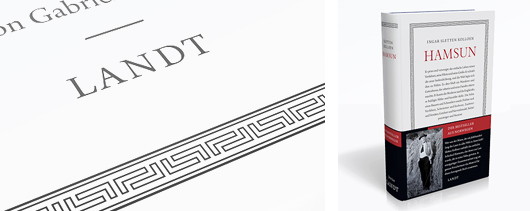
Church of St James, Spanish Place
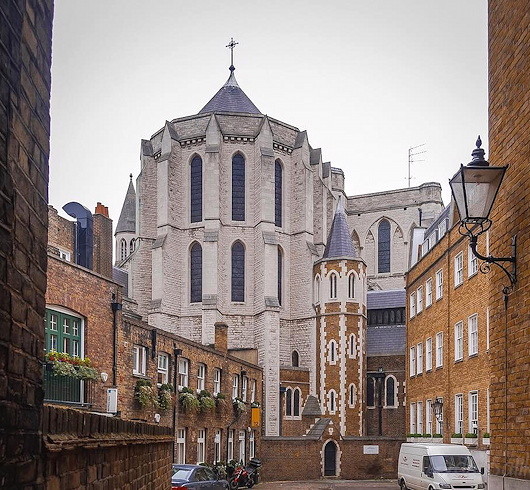
Always interesting to see a building you know well from a perspective you’ve never seen before, as in this photo of the Church of St James, Spanish Place, taken from Manchester Mews. The church somehow seems more imposing — like a great rounded keep.
A few months ago I was corralled into some favour or other that required a bit of muscle to move this there and whatnot, the payoff of which was it afforded an opportunity to explore the triforium of this Marylebone church and see the interior of the building from an entirely new vantage point.
It also meant being able to view in better detail the beautiful stained glass windows — many of them the gift of various Spanish royals, given that this parish originates as the chapel of the Spanish embassy (hence its name).
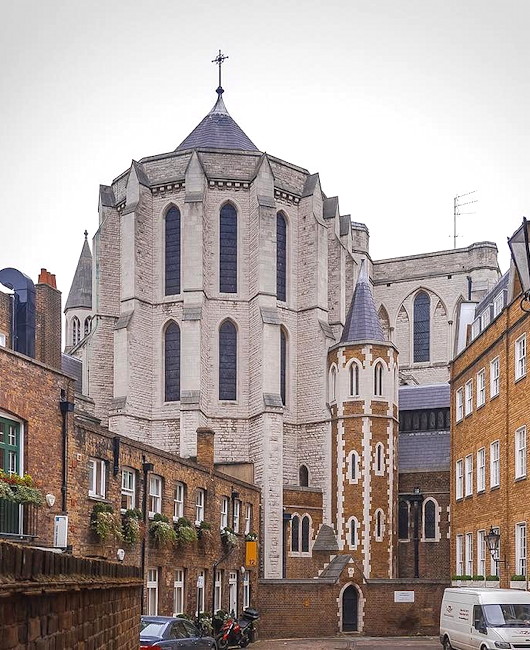
Arms of the Oudtshoorn Oratory
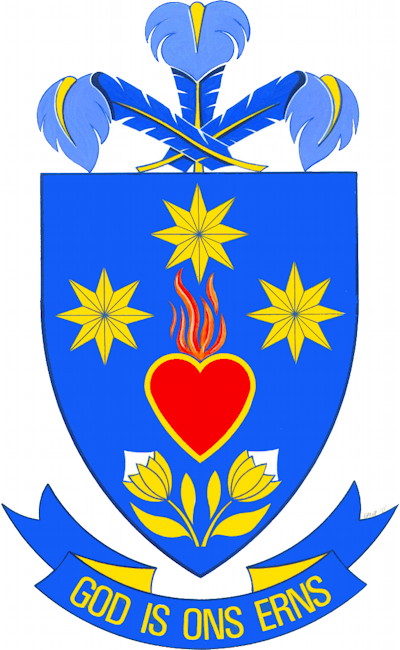
An explanation of the arms of the Afrikaans-speaking Oratory of St Philip Neri in Oudtshoorn, South Africa (edited from their own information).
Russia’s Demographic Turnaround
Most  large developed countries have been facing demographic crises, with Russia one of the worst in the past few decades. The Financial Times this week reports, however, that Russia is facing a demographic turnaround: “Rising birth rate, tumbling death rate, and immigration drives population rebound” as the subheadline puts it.
large developed countries have been facing demographic crises, with Russia one of the worst in the past few decades. The Financial Times this week reports, however, that Russia is facing a demographic turnaround: “Rising birth rate, tumbling death rate, and immigration drives population rebound” as the subheadline puts it.
In 2000, deaths at 2.23 million outnumbered the 1.27 million births by nearly a million. In 2013, 1.94 million births finally outnumbered 1.91 million deaths, while the first quarter of 2016 has witnessed a 5 per cent drop in mortality compared to just a year before.
Still, the low birth rates of the 1980s and 1990s will continue to have a reverberating effect on the working-age population, as the children who weren’t born then will obviously not have children and grandchildren. Pension ages are being changed accordingly, rising to 65 for men and 63 for women as compared to 60 and 55 respectively up until now — a Communist hangover ridiculously low in comparison to Western countries.
Despite a perilous economic condition thanks to collapsing commodity prices, Russians clearly feel their country is in a much more stable condition than the topsy-turvy 1990s. There can be no greater vote of confidence in the future than to have children.
Previously: The World Turned Upside Down
Speyer
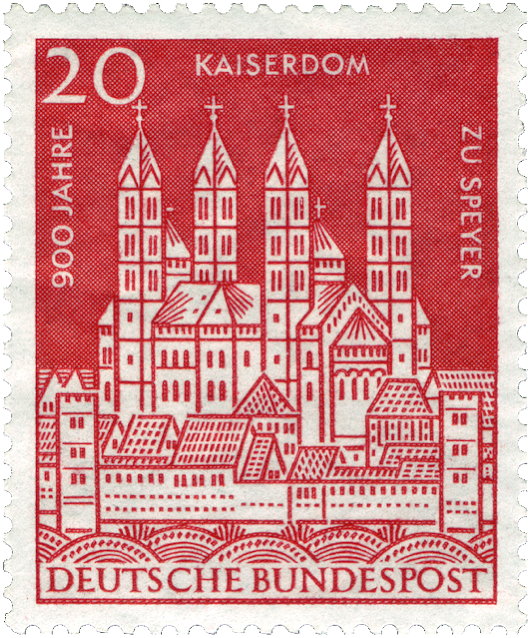
This 1961 postage stamp celebrates the consecration, nine centuries earlier, of the Imperial Cathedral Basilica of the Blessed Virgin of the Assumption and Saint Stephen at Speyer — today the largest Romanesque church still standing.
Courtyard of the Palazzo Bonagia
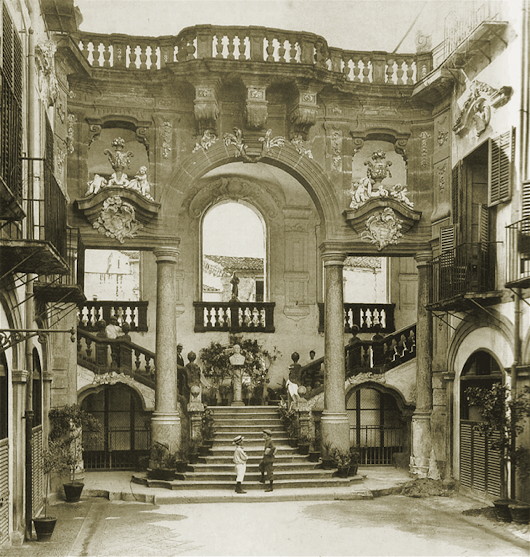
A photograph of the courtyard of the Palazzo Bonagia, the Palermo residence of the Dukes of Castel di Mirto, looking towards the rococo staircase.
The steps, columns, and balustrades are of red marble from Castellammare del Golfo, all conceived in the mind of Andrea Giganti, priest-architect of the Sicilian baroque.
The building was bombed during the last war and reduced to a shell, but thorough if slow-going restoration work began in 2009 and continues.
The Old Dutch Church of Sleepy Hollow
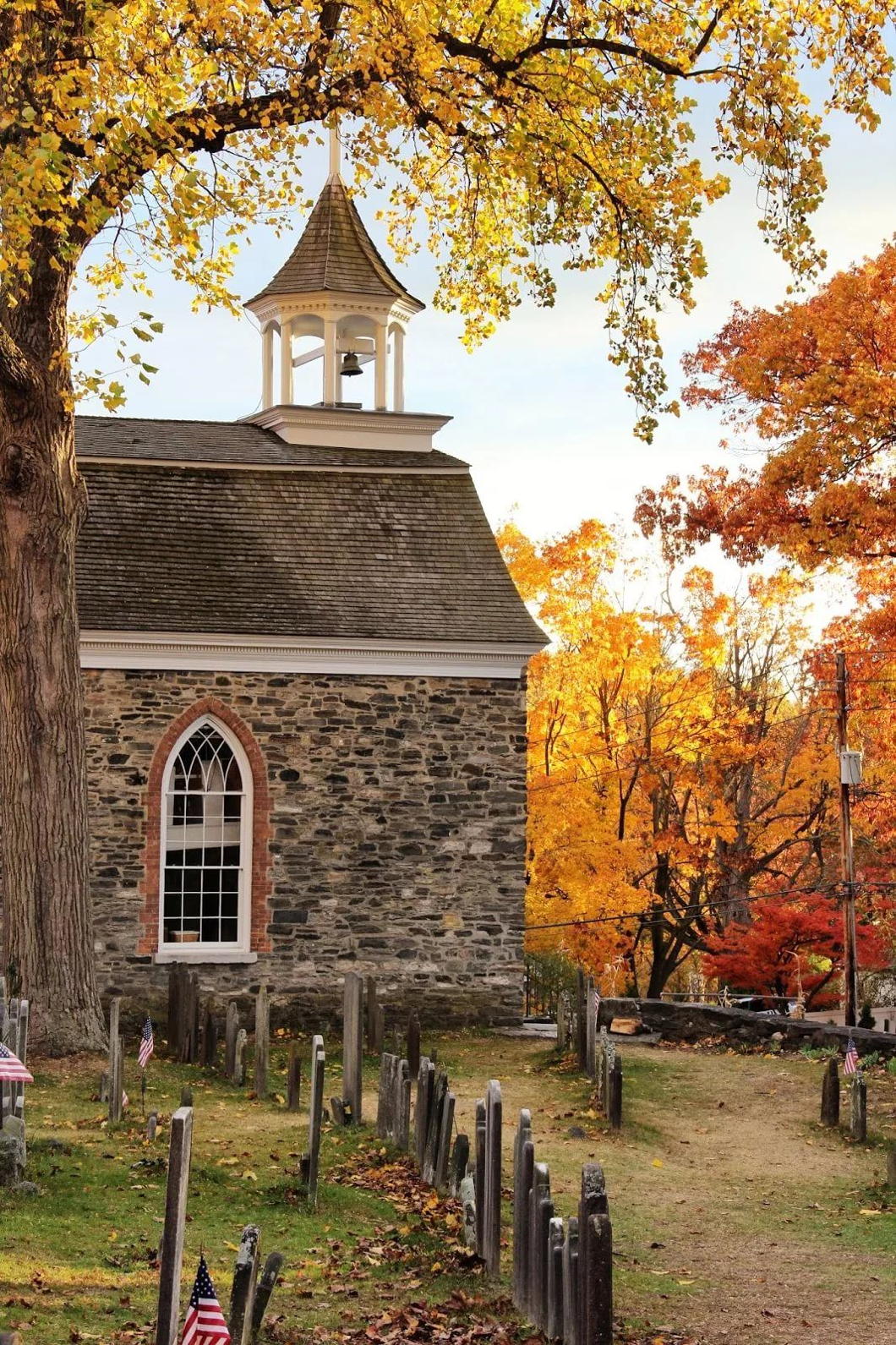
If there is any season which is plus New-Yorkaise que les autres then it must be autumn, and around the time of Hallowe’en in particular.
Thanks to the fertile imagination of Washington Irving, buried in the cemetery of the Old Dutch Church in Sleepy Hollow, the Hudson Valley is the spiritual home of this ancient Celtic feast now implanted in the New World.
The other day I dusted off the huge single-volume complete works of Irving – almost the size of an old Statenvertaling – and re-read his most famous tale, “The Legend of Sleepy Hollow”.
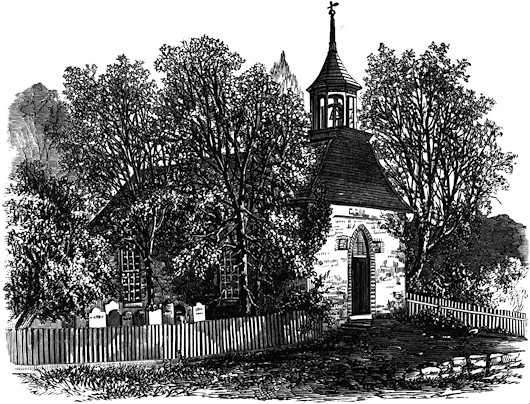
Irving describes the position of the Old Dutch Church:
The sequestered situation of this church seems always to have made it a favorite haunt of troubled spirits. It stands on a knoll surrounded by locust trees and lofty elms, from among which its decent whitewashed walls shine modestly forth, like Christian purity beaming through the shades of retirement. A gentle slope descends from it to a silver sheet of water bordered by high trees, between which peeps may be caught at the blue hills of the Hudson. To look upon its grass-grown yard, where the sunbeams seem to sleep so quietly, one would think that there at least the dead might rest in peace.
On one side of the church extends a wide woody dell, along, which raves a large brook among broken rocks and trunks of fallen trees. Over a deep black part of the stream, not far from the church, was formerly thrown a wooden bridge; the road that led to it and the bridge itself were thickly shaded by overhanging trees, which cast a gloom about it even in the daytime, but occasioned a fearful darkness at night. Such was one of the favorite haunts of the Headless Horseman, and the place where he was most frequently encountered.
The tale of the Headless Horseman is now, partly thanks to various popular reinterpretations of it, well known even outside the Hudson Valley. I remember as a wee lad growing up in that part of the world our Scout uniforms had a badge bearing the image of the “Galloping Hessian”.
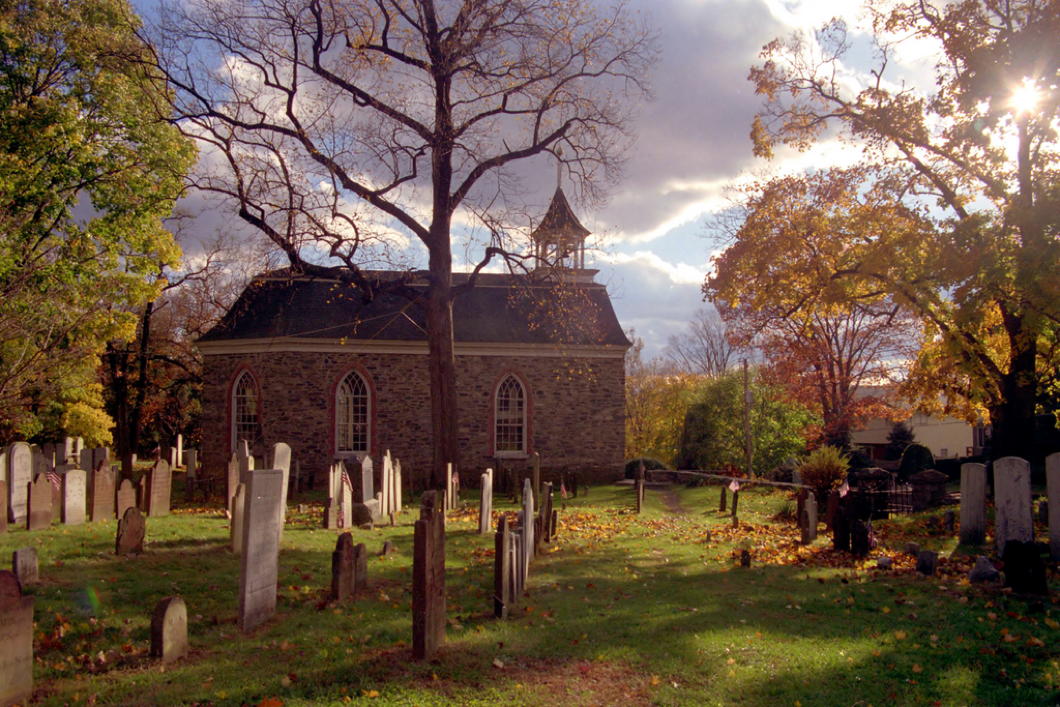
Johannes Kip’s View of London
View and Perspective of the City of London, Westminster, and St James’s Park
This view of London and Westminster is most notable for the unique perspective it takes: a bird’s eye view from above the Duke of Buckingham’s house, later acquired by the Crown and now, as Buckingham Palace, the primary royal residence.
This printing of Kip’s view, which comes up for auction soon at Daniel Crouch Rare Books, may have been printed after 1726 as it incorporates Gibb’s steeple of St Martin-in-the-Fields.
‘Decisions, decisions…’
Rather horrifyingly, one of the proposals would have erected a monumental screen closing off the forecourt, completely spoiling the view of Edward Lovett Pearce’s beautiful façade.
Luckily the Bank chose Francis Johnston to harmonise the competition designs into the building we know today.
Party in the Overberg
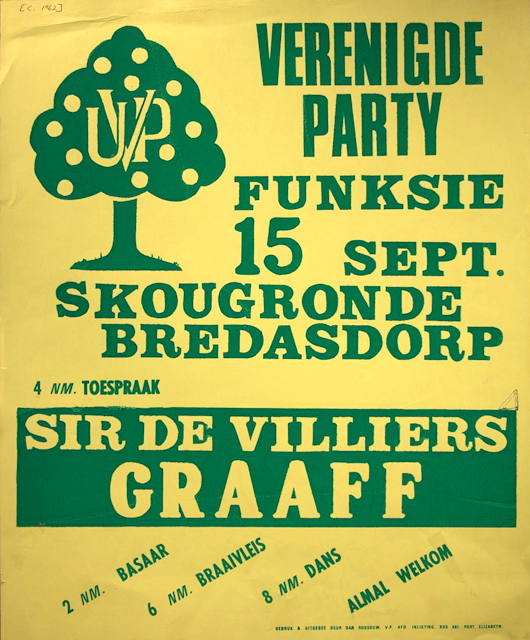
Alongside a bazaar, a braai, and dancing, a speech by Sir De Villiers Graaff is the selling point of this poster advertising a United Party (Verenigde Party) get-together in the beautiful Overberg region of the Cape.
“Sir Div” was the inheritor of one of only twelve South African baronetcies and led his party from 1956 until 1977 when it merged with the Democratic Party of verligte ex-Nationalists to form a new entity.
The broadly centrist party had lost power to the republican Nats (creators of apartheid) in 1948, and suffered splits that led to the creation of the Liberal Party and the United Federal Party in 1953, the National Conservative Party in 1954, and the Progressive Party in 1959.
The party’s emblem was a happy little citrus tree.
Letter to the Editor
A letter to the editor printed in this week’s edition of The Tablet:
Brendan Walsh’s report (“Heythrop’s fate”, 17 September) of a senior academic suggesting that the demise of Heythrop was an episode in a long struggle between “outward-facing, inquisitive, challenging” theology on one side and “inward-looking, submissive, unquestioning” theology on the other is telling.
Positing such a simplistic binary split between Enlightened Me and Poor Ignorant You is patronising to those attempting to live out the radical beauty of the Christian life in tune with Catholic teaching. It’s not surprising that an institution with academics holding this view is entering its death spiral, while religious communities that don’t consider basic orthodox belief as optional are bursting at the seams.
Few things are more challenging – and more rewarding – than faithfulness; while some cling to clapped-out heterodoxies and managed decline, the rest of the Catholic world has moved on.
ANDREW CUSACK
London SW1
A Fifty Pound Note
The recent arrival of the new fiver has caused some flurry of excitement and one of the notes finally reached the Cusackian exchequer via the barmaid at the Ox Row Inn in Salisbury on Friday night. I’m indifferent to the design; it’s inoffensive but I’d prefer to see Churchill depicted in his coronation robes rather than Yousuf Karsh’s iconic photograph.
My favourite Bank of England note, however, remains the Series D £50 first issued in 1981 designed by the Black Country artist Harry Eccleston. Sir Christopher Wren lookings crackingly baroque, and St Paul’s Cathedral looms like a great ship over the City of London he helped to rebuild after the Great Fire 350 years ago.
Eccleston was the first banknote designer to work fulltime for the Bank of England which he joined in 1958, retiring in 1983, and introduced the concept of historical figures from British history gracing the back of the notes (which are of course fronted with an image of the Sovereign). This particular note was the first fifty-pound note to be issued since 1943. It was replaced in 1994 and withdrawn from circulation two years later.
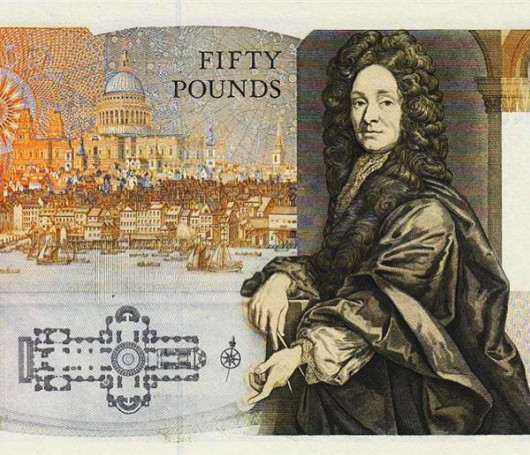
Oliver VII
by Antal Szerb, trans. by Len Rix
Pushkin Press (2013), £12, 208 pages
Hungarian by nationality, Catholic by faith, Jewish by blood — Antal Szerb was capable of touching the boundaries of intense seriousness bordering on the mystical (as in Journey by Moonlight) or magical (The Pendragon Legend) even though he is probably better known as paragon and only member of the interwar neo-frivolist school of literature.
Here he is at his frivolous best with a novel about the monarch of a Ruritanian kingdom in crisis who abdicates and escapes to Venice incognito, where he falls in with a crowd of confidence tricksters who ultimately, unaware of the ex-king’s true identity, force him to impersonate himself.
In Oliver VII, romance, intrigue, and the perpetual allure of the genteel portion of the criminal class all combine in an enjoyable farce.
The Red Mass in Edinburgh
The opening of Scotland’s judicial year was marked this past Sunday by the Archbishop of St Andrews & Edinburgh offering the customary Red Mass in St Mary’s Cathedral.
This year Archbishop Leo Cushley was joined by Lord Drummond Young and his fellow Senators of the College of Justice, Lord Uist, Lord Doherty, Lord Matthews, and Lady Carmichael.
Gordon Jackson QC, the Dean of the Faculty of Advocates, and Austin Lafferty of the Law Society of Scotland joined many sheriffs, QCs, advocates, solicitors, trainee solictors, paralegals, and law students.
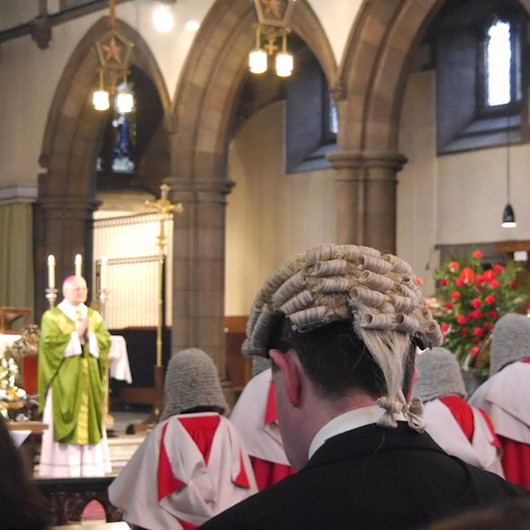
“These men and women serve the nation in a high office and come here to ask the Lord’s blessing upon this year’s work that they carry out on our behalf,” Archbishop Cushley noted in his homily.
“Know that we appreciate the difficult and complex tasks that you have and the duties that you perform – which are very onerous – on behalf of us all and that you be assured of our prayers and our support for all that you do to apply the law of the land with virtue and with justice and with mercy.”
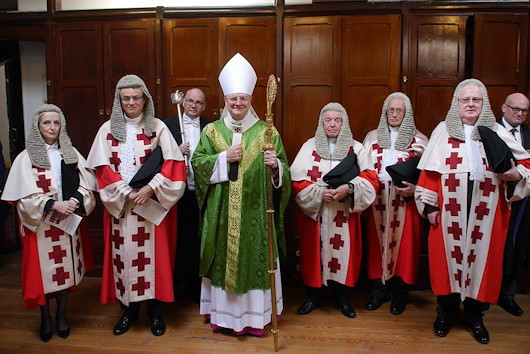
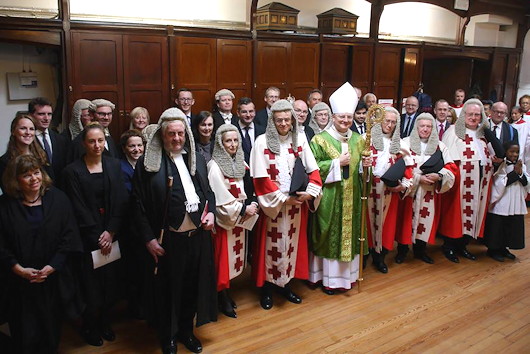
Oxford: An Architectural Guide
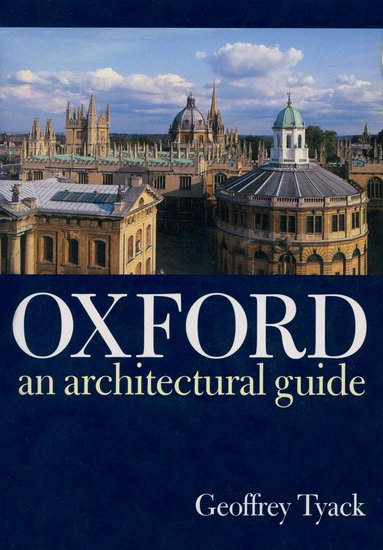 Oxford: An Architectural Guide
Oxford: An Architectural Guideby Geoffrey Tyack
OUP (1998), £16.99, 384 pages
Geoffrey Tyack writes with a fluid style that accesibly conveys a great amount of specific detail of people, places, materials, and more without the reader feeling the least bit overwhelmed. Even the most veteran Oxonophile will gain deeper insight into what buildings were built by (and for) whom, with what money, and how they’ve been adapted over the centuries. A model guide to the architecture of the finest university town in the world.
Die Ou Swaai Pomp
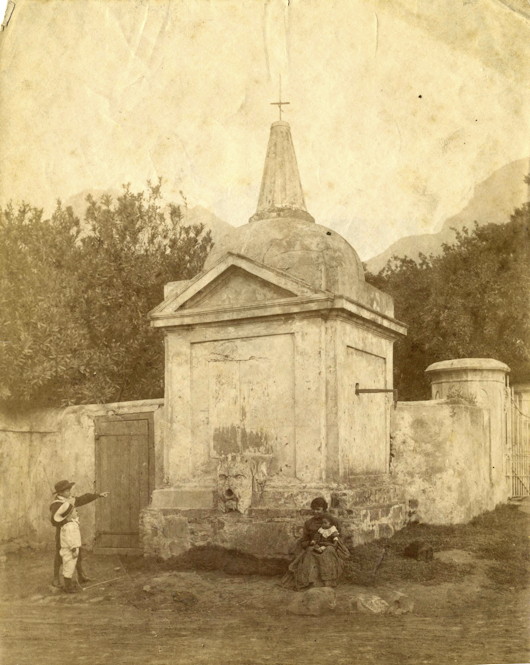
The old water pump at the corner of Prince Street and Sir George Grey Street in the Cape Town neighbourhood of Oranjezicht was part of the system created by the Swede Jan Frederik Hurling in the 1790s for his farm, Zorgfliet. This particular structure was erected at the pump site in 1812 to a design by Louis Michel Thibault, embellished with a water-sprite gargoyle attributed (inevitably) to Anton Anreith.
It was operated by swinging the wooden handle on the side to and fro, hence why it is known as a swaai, or “swinging”, pump.
The photo above is the work of the Cape photographer Arthur Elliott whose work not only documents the early architecture of the Cape but more often than not manages to do so in an artistic and evocative manner.
Elliott is especially valuable considering how many of these structures faced the wrecking ball in the intervening century since he took his photographs, though — as you can see from a Google StreetView capture below — the Old Swaai Pump is still in its place today and is a monument protected by national and provincial law.
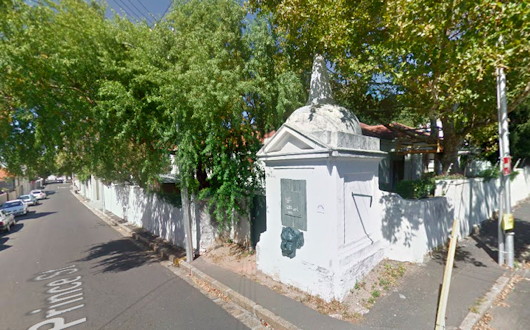
Michael Ellis
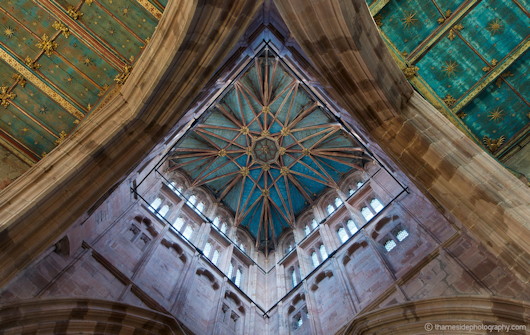
Stumbled upon the website of a firm called Thameside Media whose architectural photographer, Michael Ellis, has done some superb work in capturing English churches on film (metaphorical film, I suppose, now that the world has gone digital). (more…)
St Pancras Town Hall
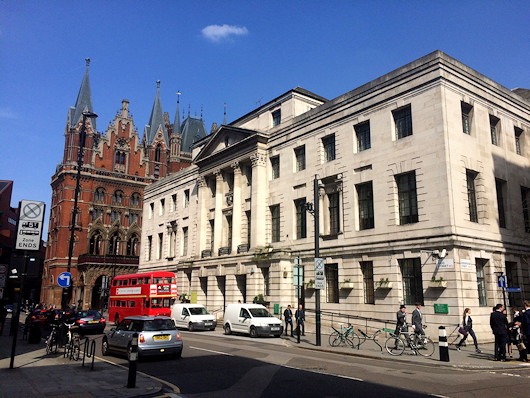
St Pancras Town Hall is an interwar classical building by the architect A.J. Thomas (of whom I know little). The façade is a little clunky but in the warmer months it’s adorned with arrangements of flowers that soften this stern civic edifice with a bit of welcome frivolity.
When the Metropolitan Borough of St Pancras was merged with the neighbouring bailiwicks of Hampstead and Holborn to form the London Borough of Camden in 1965 this was chosen as the town hall of the new entity, so it’s now referred to as Camden Town Hall.
But of course of all the buildings under the patronage of the fourteen-year-old, fourth-century martyr Pancras, the most prominent is the international railway station across the Euston Road (below) that connects this metropolis with the rest of the continent across the Channel.
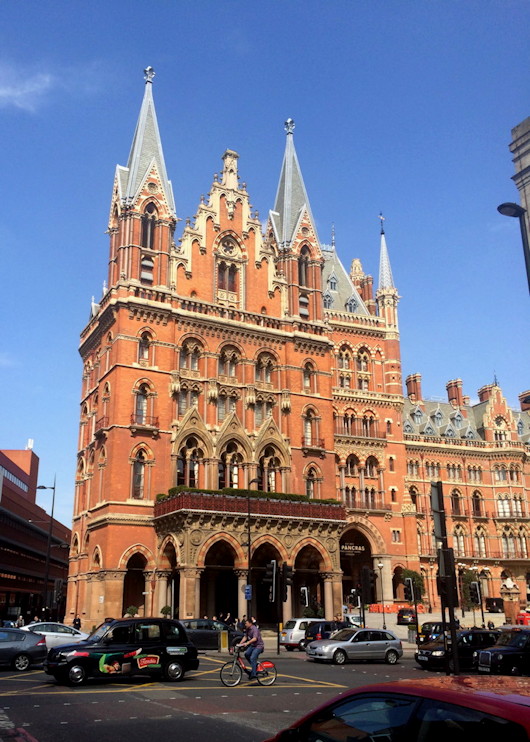
Search
Instagram: @andcusack
Click here for my Instagram photos.Most Recent Posts
- Gellner’s Prague December 19, 2024
- Monsieur Bayrou December 18, 2024
- Dempsey Heiner, Art Critic December 17, 2024
- Vote AR December 16, 2024
- Articles of Note: 12 December 2024 December 12, 2024
Most Recent Comments
Book Wishlist
Monthly Archives
Categories


